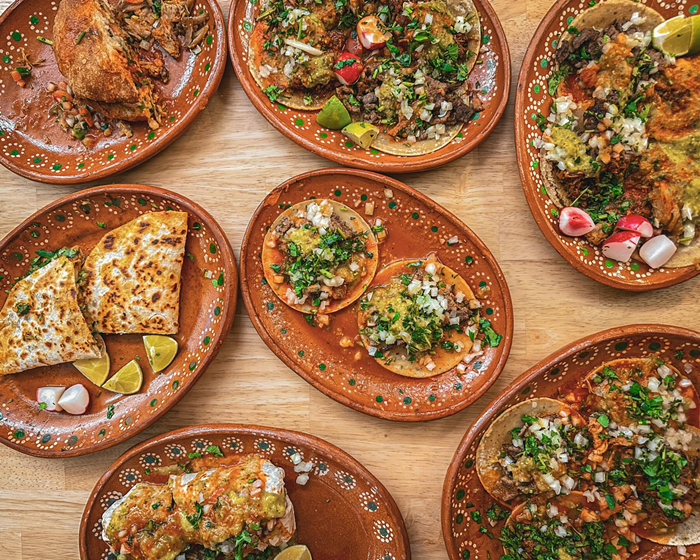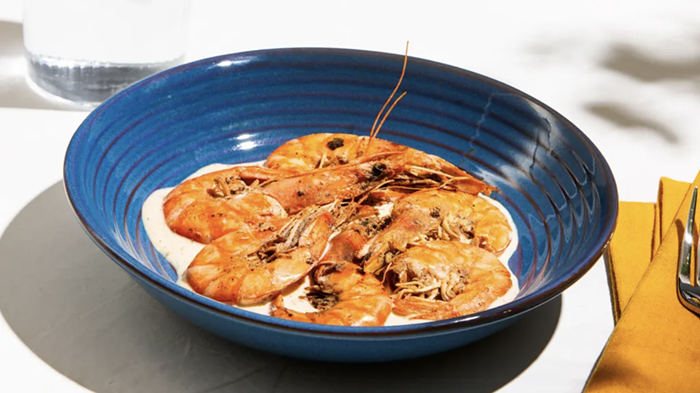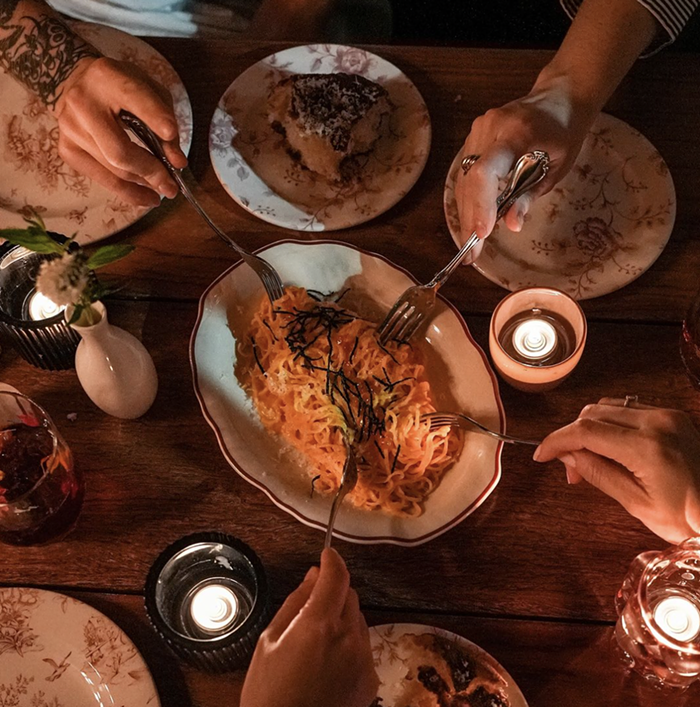Languages do not hear the same. For example, the way English hears the bark of a dog is not the same as it is heard in Shona, a language spoken by blacks in southern Africa.
In English, it is woof woof; in Shona, it is imbwa, which is also the word for "dog" (Shona has lots of onomatopoeias—my fave: "bhanan`ana" is "thunder"). If you repeat imbwa over and over, you will hear what Shona people hear when a dog is barking at them. Another example, this one taken from Wikipedia: The sound a clock makes is tick tock for the speakers of English and katchin katchin for the speakers of Japanese. Also, the Japanese hear the sound of thinly sliced beef being dipped and stirred in a bubbling broth as shabu shabu, whereas those in the English language hear it as swish swish. And, indeed, this is exactly what I heard when I, an English speaker, visited Shabu Chic, a new Japanese restaurant in the ID, and dipped with chopsticks a raw slice of beef in a hot pot: swish swish.
Shabu Chic is at the back of a strip mall near 12th and Jackson. It faces a rude wall of brown rocks, a rusty iron fence, wildly growing grass and bushes, a few confused trees, and a hill that ends with the white and blue ghosts of social housing. Yesler Terrace, a complex of townhouse apartments that was made in 1942 for poor blacks and whites—it was the first racially integrated housing project in the United States—will be destroyed in the near future and replaced by a Hong Kong–like "mixed-income" development that's sure to raise the value of the hill, grass, trees, and this charmingly shabby strip mall in the heart of Little Saigon.
Shabu Chic has above its door an Edo-style timber awning. The space inside is small and dominated by a silver U-shaped dining counter that's under a silver vent. Embedded in the top of the counter, which is made of marble, are several black hot plates, and one end of it supports a massive meat slicer that's frequently fed by two big chunks of beef. When it comes to shabu shabu, the kitchen is the dining room. The restaurant also has three or so regular tables for families with kids or big groups or people who might find the big kitchen vents oppressive.
Taking my place at the counter, I heard Justin Bieber on the stereo. This was a good sign. Nothing is more foreboding than hearing traditional Japanese music in a Japanese restaurant. It always means you're going to get theater (decor, biwa, flute, mass-produced folding screens) instead of good food. What you want to hear in a Japanese or even Chinese restaurant is flat American pop—the trashier the music, the higher your expectations. And you can't get any trashier than Bieber. Sure enough, the food at Shabu Chic proved to be as good as the music was bad. But before I go any further, I must explain what shabu shabu is.
Related to the Chinese hot pot, shabu shabu made its first real appearance around the middle of the 20th century in a restaurant in Osaka. From that point, it radiated across the island, entered mainstream Japanese cuisine, crossed the Pacific, and spread across California. Shabu Chic is the only restaurant in Seattle that's nothing else but this kind of meal: slim slices of beef and vegetables, and the diner cooking these raw foods in a broth.
There are many types of shabu shabus, and the one you find at Chic is composed of these parts: Chinese cabbage, enoki mushrooms, bok choy, and carrots, all served with tofu and udon noodles. The meat is either excellent beef (rib eye) or very expensive beef (American Kobe). A hot pot with 10 slices of the former costs $11.99; 10 of the latter, $24.99. Along with the choice of meat, there is a choice of broth, three in all: spicy miso, sukiyaki, and traditional seaweed. When the food has been cooked in the broth (the veggies take about two minutes; the meat about 20 seconds), you dip it in one of two sauces: goma (a sesame seed sauce) or ponzu. After a little saucing, you place the food in a bowl of rice. And there it is.
But if the diner is essentially the cook, how can one determine if the meal is bad or not? You are not judging a chef but your own tastes and timing: how long you let the meat/veggies cook, the amount of attention you pay to this cooking, and so forth. It is all about you. However, there are two things that you can judge in a shabu shabu restaurant. One is the freshness of the vegetables and meat, and the other is the taste of the broth, which is prepared by a cook in big vats. I rate Shabu Chic highly because the food was not only fresh but looked clean—indeed, the vegetables were so immaculate, I had the distinct impression they were grown on special sponges rather than soil. As for the broth, two of the kinds, spicy miso and traditional seaweed, are solid, and one, sukiyaki, is superb. Eating at this place reminds me of a scene in an Ozu film, but that is another matter for another time. ![]()




















